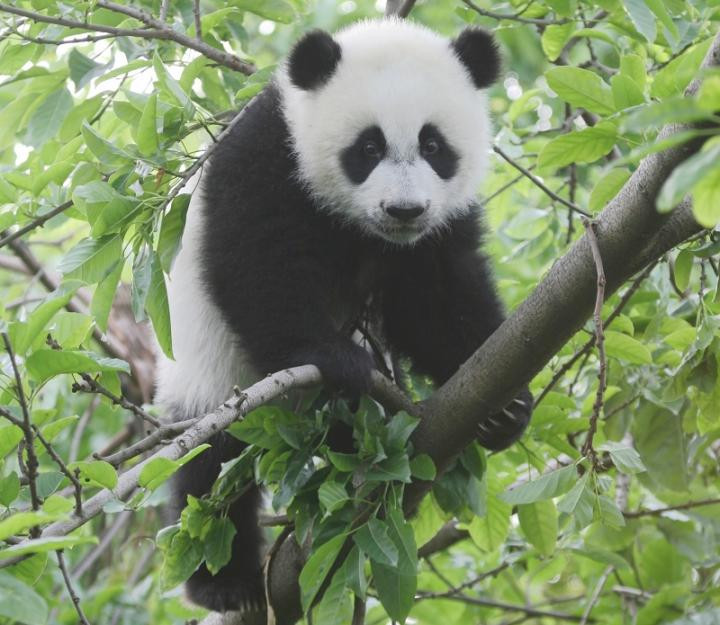Pandas don't like it hot: Species threatened by rising temperatures, not lack of bamboo

Rising temperatures and climate change are a bigger threat to panda conservation than lack of bamboo, scientists have said. Considering how much of the plant is available in the wild, they believe it is unlikely pandas will go hungry any time soon – but they could suffer from increasing heat.
The giant panda is often seen as an icon of conservation. It survived the large-scale bamboo die-off in China in the 1980s. Since then, great efforts have been made to increase the animal's population in the country – through breeding programmes in captivity and the progressive reintroduction of some individuals in the wild, in nature reserves.
To pursue these efforts, scientists are investigating how environmental changes may affect pandas in the near-future.
In this latest study, published in Scientific Reports, they examined whether there are enough bamboos in the wild to continue reintroducing more animals, and if it can ensure their survival.
A hunger for bamboo
Working with captive pandas from the Chengdu Research Base, a research and breeding facility in China, the team assessed the animals' metabolic rate – the number of calories required to keep their bodies functioning at rest.
Unlike previous research, which had placed the pandas' metabolism at a very low rate, the scientists found out that it was just a little below what would be expected for a mammal of their size.
At the metabolism rate they determined, pandas may need to eat 29-33lb (13.1kg-14.6kg) of bamboo leaves and stems per day, in order to sustain themselves.

Yet, the researchers believe the quantity of bamboos available in China's nature reserves is large enough to satisfy the hunger of all its pandas, even with more individuals being reintroduced.
"The crisis caused by the bamboo die-off in the 1980s has subsided," says lead author James Spotila, from Drexel's College Of Arts And Sciences. "The bamboo supply in nature reserves is not the limiting factor for giant panda populations and reintroduction programmes." So what is?
Too hot for pandas
According to this study, rising temperatures could be the real threat, killing off bamboo and exposing the large mammals to heat stress. Pandas are indeed not well equipped to live in temperatures above 25C (77F).
"We're very concerned. Higher climate temperatures would upset the entire system in the panda reserves and the wild, eliminating vast amounts of bamboo," Spotila says. "They (pandas) have to live at temperatures below 25C to stay healthy".

He points out that in the wild, pandas actively seek out cool areas in summer and move to higher elevations to avoid heat. Climate change could expose them to uncomfortable temperatures and hamper their ability to survive the heat.
While the scientists recognise that conservation efforts have so far been successful, they warn the positive trend could soon be overturned. "Unchecked climate change will undo all of the years of hard work by the Chinese to save their national icon," Spotila concludes.
© Copyright IBTimes 2025. All rights reserved.






















